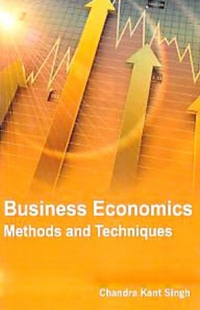C1. A. Should the yield of a corporate bond be higher or lower than a Treasury which has the same maturity date but a lower coupon? Why? [2 points]
C1. B. Suppose the yield of the Treasury is 2%, the likelihood of default in the next year of the corporate is 1.5%, and the expected recovery rate conditional on default is 40%. Ignoring liquidity issues, what is your best estimate of the yield of a bond issued by this corporate? [4 points]
C2. A Treasury bond has a coupon rate of 9%, a face value of 100$ and matures 10 years from now. For a treasury bond, the interest on the bond is a paid in semiannual installments. The current riskless interest rate is 12%.
a) What is the current price of the bond? [3 points]
b) If you buy the bond at this price, under what circumstances do you make money? [2 points]
c) Let's suppose you buy the Treasury Bond described above. Just after you buy, the risk interest rate decreases to 9%. What would be the new market price? [2 points]
What are the Sum of Square between (SSB) and Sum of Squares within (SSw)? SSB = 1041 SSw = 1003 O SSB = 1003 SSw = 1041 O SSB = 1041/2 = 520.5 SSw = 1003/27 = 37.1 O SSB = 1003/27 = 37.1 SSw = 1041/2 = 520.54. Suppose that n light bulbs are burning simultaneously to determine the lengths of their lives. We shall assume that they burn independently and that the lifetime of each bulb has the exponential distribution with parameter . Let X2- denote the lifetime (in thousand hours) of bulb i, for 2' : 1, . . . ,n. The pdfJ mean and variance of exponential distribution Expw) are 1 1 1%) = fie'93, 1300 = -, Var(X) = 2- 3 X3 (a) What does the central limit theorem say about the distribution of W when n is large? (b) Find a two-sided 95% condence interval of the mean lifetime (1/3). Express your answer in terms of n, X and z (the 2 critical values). Interpret the condence interval you obtain in context of the situation. (c) Now, suppose that we want to test whether or not the mean lifetime is 1000 hours, we would consider H0:,8=1Ha:71. Derive the likelihood ratio statistic. (d) Denote the likelihood ratio statistic by A(X). Should the null hypothesis H0 be rejected when A(X) is large or small? (0) What is the large-sample distribution of 2 log AU?) when the null hypothesis H0 is true? (f) Explain what a Type I error would mean in context of this problem. Utilitarianism is: A theory from moral philosophy that argues that an act is right if it serves to maximize the attainment of human satisfaction. OA theory from moral philosophy that argues that profit and financial well-being are important parts of evaluating an ethical situation and should not be ignored or dismissed. A theory from moral philosophy that argues that we should always choose the action that will best benefit us as individuals Question 4 2.5 pts The author, Kelman, analyzes cost-benefit analysis through the lens of ethical theory. He argues for three conclusions. Which of the following IS NOT one of Kelman's conclusions? O In areas of environmental, safety. and health regulation, there may be many instances where a certain decision might be right even though its benefits do not outweigh its costs. Of Given the reasons why it is problematic to monetize non-marketed benefits or costs that is a prerequisite for cost-benefit analysis, it is not justifiable to devote major resources to the generation of data for cost-benefit calculations or to undertake efforts to further promote cost-benefit analysis. Getting decision-makers to make more use of cost-benght techniques is important enough to warrant both the expense required to gather the data for improved cost-benefit estimation and the political efforts needed to give the activity higher priority compared to other activities, (): There are good reasons to oppose efforts to put dollar values on on-marketed benefits and costs,A Moving to another question will save this response. Question 3 The term differential cost refers to: A cost which continues to be incurred even though there is no activity. A cost which does not involve any dollar outlay but which is relevant to the decision-making process. A difference in cost which results from selecting one alternative instead of another. The benefit forgone by selecting one alternative instead of another. 1 Moving to another question will save this response










